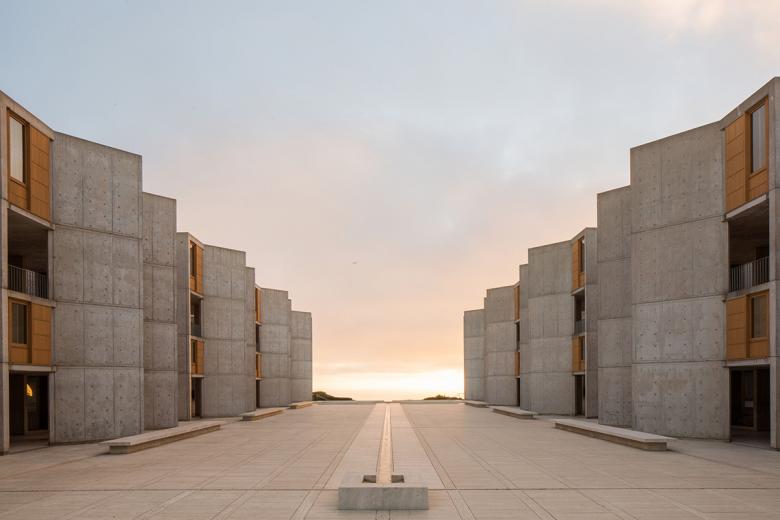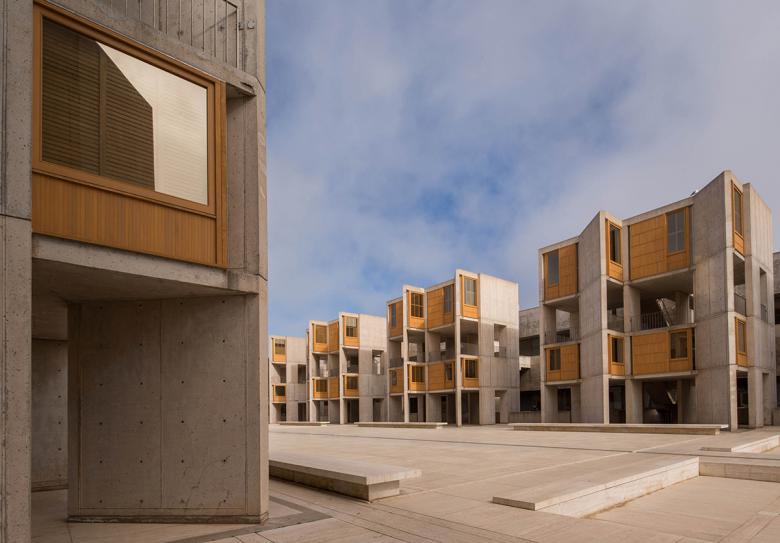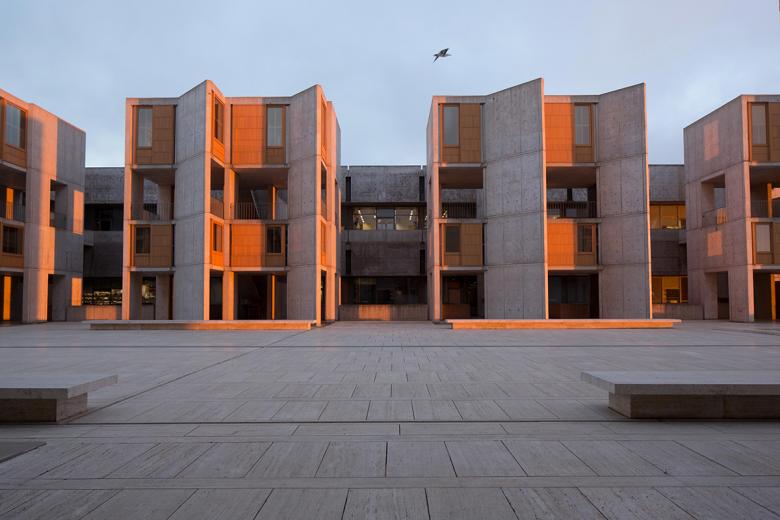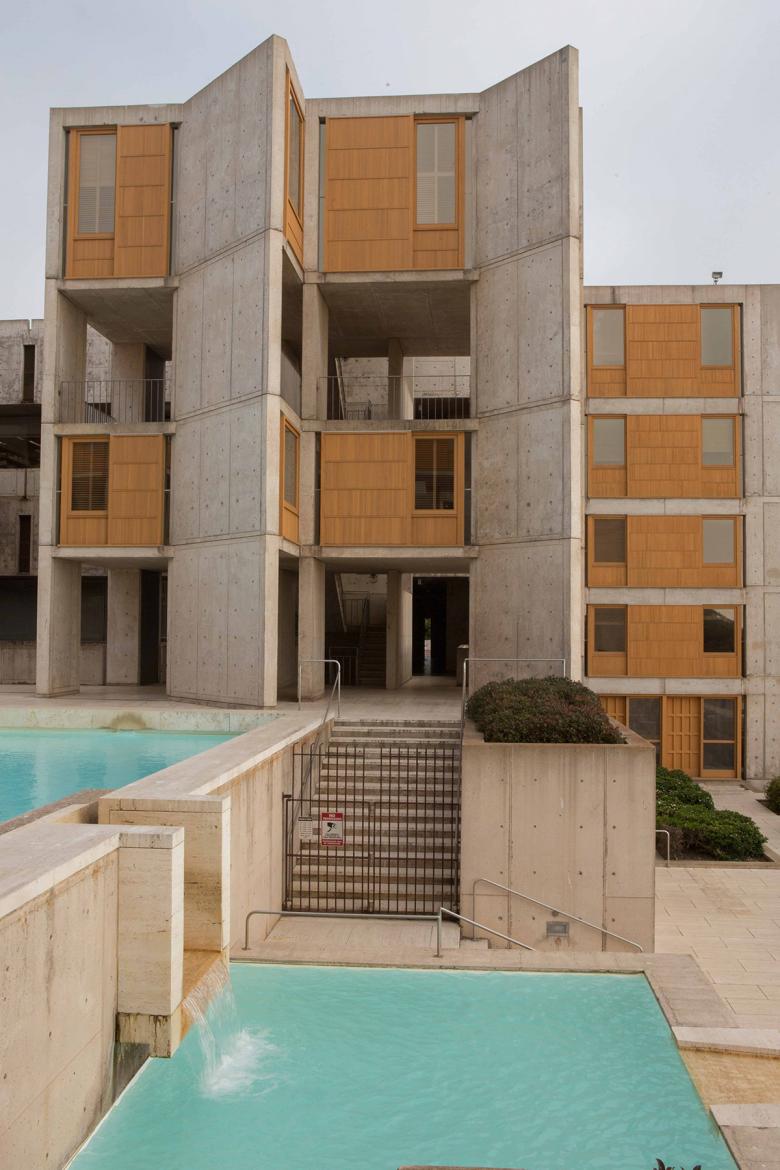Salk Institute's Teak Panels Restored
Work has wrapped up on one aspect of the ongoing restoration of Louis I. Kahn's classic Salk Institute for Biological Studies in La Jolla, California: the conservation of its teak window walls.
To carry out the work, the Salk partnered with the Getty Conservation Institute (GCI), which included the 1965 building as one of ten recipients of its inaugural Conserving Modern Architecture Initiative, announced in September 2014. As part of that initiative, the GCI contributed $200,000 toward the Salk's restoration efforts; by comparison, the restoration of the teak windows cost $9.8 million, and conservation of the exposed concrete – the next feature to address – still has to take place.
According to a GCI statement, after 50 years of exposure to the marine environment overlooking the Pacific Ocean, "the institute’s distinct teak window walls, set within the monolithic concrete walls of the study towers and offices, had weathered to a non-uniform appearance and were deteriorated." Issues included the growth of a fungal biofilm that colored the wood black, old sealers and stainers further changing the wood's color, and an infestation of insects and the infiltration of moisture from bad detailing around the windows.
Through the historical research and on-site analysis of GCI, and the restoration design of Wiss, Janney, Elstner Associates (WJE), more than two-thirds of the teak in the 203 window walls was reused. The work is expected to extend the life of the teak panels for another 50 to 70 years, thanks in part to a comprehensive conservation management plan developed by WJE with the consultation of Peter Inskip + Peter Jenkins Architects.
For the time being at least, the completion of this work means people making the architectural pilgrimage to the Salk can see the building not shrouded by scaffolding for the first time since September 2015.
Articoli relazionati
-
-
-
-
-
Jack C. Taylor Visitor Center at the Missouri Botanical Garden
Ayers Saint Gross | 09.12.2024



